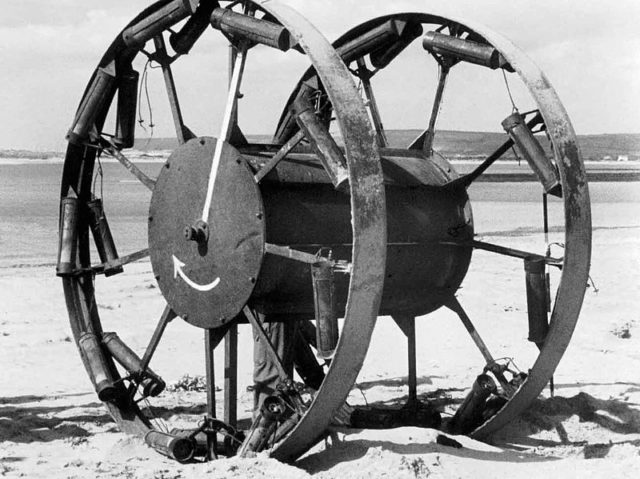Classed as a failure in weapons construction and application, the panjandrum, or “Great Panjandrum” as it was named, is right at the top of any British list.
Designed in World War II, it was a weapon designed for D-Day, to break through the coastal Nazi defenses at the Atlantic Wall. The idea sounds quite feasible – create something that will break a tank-sized hole in the wall so that the British could storm the beaches without reaching a high death toll.

However, sometimes the planned and drawn upon paper doesn’t quite live up to in real life. It was designed by the DMWD (Directorate of Miscellaneous Weapons Development) and was one of many highly experimental weapon projects developed and trialed.
The concrete defenses of the Atlantic Wall were no joking matter. The wall was ten feet tall with seven feet thick concrete in most places. Along the wall, there were gun emplacements, so one wouldn’t want to be send in a ground crew, as they wouldn’t make it very far.
Out in the oceans were mines and floating barbed wire that shifted in the tides. Whatever was built, it had to be able to be launched from a boat and be able to get up the gradient of the beach in order to blow a hole in that sizable defense. It was estimated that the size of the charge would have to be just over a ton of explosives.

The panjandrum was such a thing. It was basically two large wooden spiked wheels with rocket propulsion, held together by a bomb in a central drum. Even though it was supported with modifications to add more rockets, the weapon spun erratically around– sometimes on one wheel, other times on two. Rockets fell off and sped away, so at its final trial, it managed to scare one dog and nearly ran over the cameraman.
It was supposed to reach speeds of 60 miles per hour, but it wasn’t able to do that in any of the trials. For the trials, the bomb weight was substituted with the corresponding weight in sand. Control was always a concern with this weapon as it struggled to roll straight on flat sand, and where the weapon had slated, the sand was littered with debris as well as sloped.

A third wheel was added to the wheels to provide stability, but that also failed. Another disadvantage were the rockets which often detached from the rolling wheels, thus affected the speed and spin. It was never used in battle.
In 2009 the weapon was recreated and also failed to go very far on a wet beach. There are online videos that show footage of the original trial or the reconstruction in 2009.
